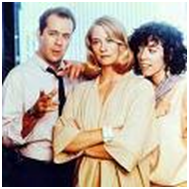Architectural Practice as an Ambidextrous Organization
(a revision of a 04.24.06 blog post)
After reading a Harvard Business Review article entitled The Ambidextrous Organization a skunkworks immediately came to mind as did the notion of the practice of architecture as an ambidextrous organization.
A skunkworks is a group of people who, in order to achieve unusual results, work on a project in a way that is outside the usual rules. A skunkworks is often a small team that assumes or is given responsibility for developing something in a short time with minimal management constraints. Typically, a skunkworks has a small number of members in order to reduce communications overhead. A skunkworks is sometimes used to spearhead a product design that thereafter will be developed according to the usual process. A skunkworks project may be secret. The name is taken from the moonshine factory in Al Capp’s cartoon, “Lil’Abner.”
Could a skunkworks expand the reach of the brick-and-mortar office to remote off-site or untapped regions and markets? Could it enhance intern recruitment (because what intern wants to come out of design school and get stuck on a million sf hospital for 7 years?). Can it create design opportunities along the entire continuum of experience and tenure (again in reaction to the big jobs, and also since it is so commonly believed that the font of design percolates down from only a select handful of Designers).
And the ‘vehicle’ for such an evolution? Of all things, why not the on-site project field office trailer!

So, while fulfilling our contractual obligations to the large project during the construction phase, the field office could be more than a CA ‘jobshack’. With the depth of resources and upper level guidance from the mothership-office, a minor field office has the potential to yield any number of greater firm goals, like: (1) expanding in local markets where we would like to be or already have project commitments, (2) deepening the pool of entry-level architects who would be ramped-up in the firm’s way of doing things to migrate back and forth between outposts and major offices, and (3) creating design opportunities along a broader spectrum of scales and project types. At the most basic level, an alluring, sophisticated satellite workplace environment could, if not in the iconic Airstream, then perhaps in a simple Main Street storefront sublet, by the high quality of its TI upfit, be a real presence and local showcase for the firm’s brand.
The outpost is first and foremost a CA field office. But it may also function as a recruiting center for young architects to transition between architecture school and corporate practice while both nurturing their creative spirit and offering more across-the board IDP exposure for ARE candidates. Further, as a signature space that can be marketed locally, these highly energetic outposts would produce and deliver not only short-duration, high design content, local award-winning commissions that could increase peer recognition but give credibility to our claim by putting our people on the ground, insitu and better poised to do place-based design.
These ideas embody the notion of ‘nimble’ as applied to this late phase of the architectural process. The HBR article helps illustrate this kind of exploration in big business as a model for any business sector employing an exploratory outpost model to both fulfill obligations to the large out-of-town project and to “retain, reward, and professionally satisfy” its team members by making the most of the places we already have to be, fostering mentorship and nurturing creativity, and by increasing opportunities for design for all team members if not solely via the singular large project, than by the promise of the multitude of smaller scale design-oriented projects yielding more design ‘surface area’ for more members of the already assembled large project team outpost…
The evolution of the idea manifested itself in an actual field office, on an actual big project, in a second-tier market, in this case, Chapel Hill, NC for the construction phase of a large Hospital project. The Triangle region of North Carolina is home to a number of universities (and the ACC rivalries between them, mainly Duke, UNC, NC State, Wake Forest…) and headquarters to some major companies like IBM, SAS, Red Hat and Big Pharma like GSK and others, all based in the region and the Research Triangle Park, or RTP. But instead of the dream of some flood of intern recruitment, design possibilities at a fast-paced smaller “boutique” scale, and glamorous studio digs, other synergies emerged: PMs sought local outpost employees to staff other projects in the region or more commissions locally; inter-office collaboration is put to the test, in this case, west coast design/east coast construction; and firm IT gets savvy (ie. where live files reside, streamlining working conditions over the WAN, IP phones in field office outposts).

Gittin’r done and bringin’r home is our primary goal and responsibility. This is not the first field office ever of course, and I know the recruitment and retention of the project administrative assistant’s position as a for instance for a field office back into the brick-and-mortar office at completion of the construction phase is not uncommon. So this precedent can be extended to architect-interns with the same intentions of recruiting and retaining these positions at the mothership at the end of the construction phase.
As for the greater goal of creating design opportunities, it will be, as it should be, the field office staff’s priority to also market the firm and firm brand locally. And should design-oriented commissions result, these projects could be fed back to the mothership or moonlighted in Chapel Hill.
Is moonlighting a dirty word?

Why is this important? For field office staff, the inherent design atrophy that occurs in the CA phase is as the saying goes: what doesn’t kill you only makes you stronger. But also the physical distance and dislocation from the people and resources of the main office can be as much a blessing as it is a curse.
The mothership would never allow an outpost to hang itself and conversely, ever let it have too much rope. The value of the spirit of a skunkworks is undeniable. The reality of our primary responsibility on-site is obvious. A firmwide commitment however to creative thinking to enhance business practices that will in turn enhance the work-a-day environments of staff based both in the major office and in these temporary outposts is why the question is being asked in this forum.
The contention here is that architects would, by their passion for design problem-solving, be incentivized if not only by market expansion (and economic gain) and the professional growth unique to the large project experience, then by the basic obligation of mentorship and the lure of design opportunities at a manageable and satisfying scale.
Besides, the DWR Airstream is sweet. Have HughesNet, will travel!
